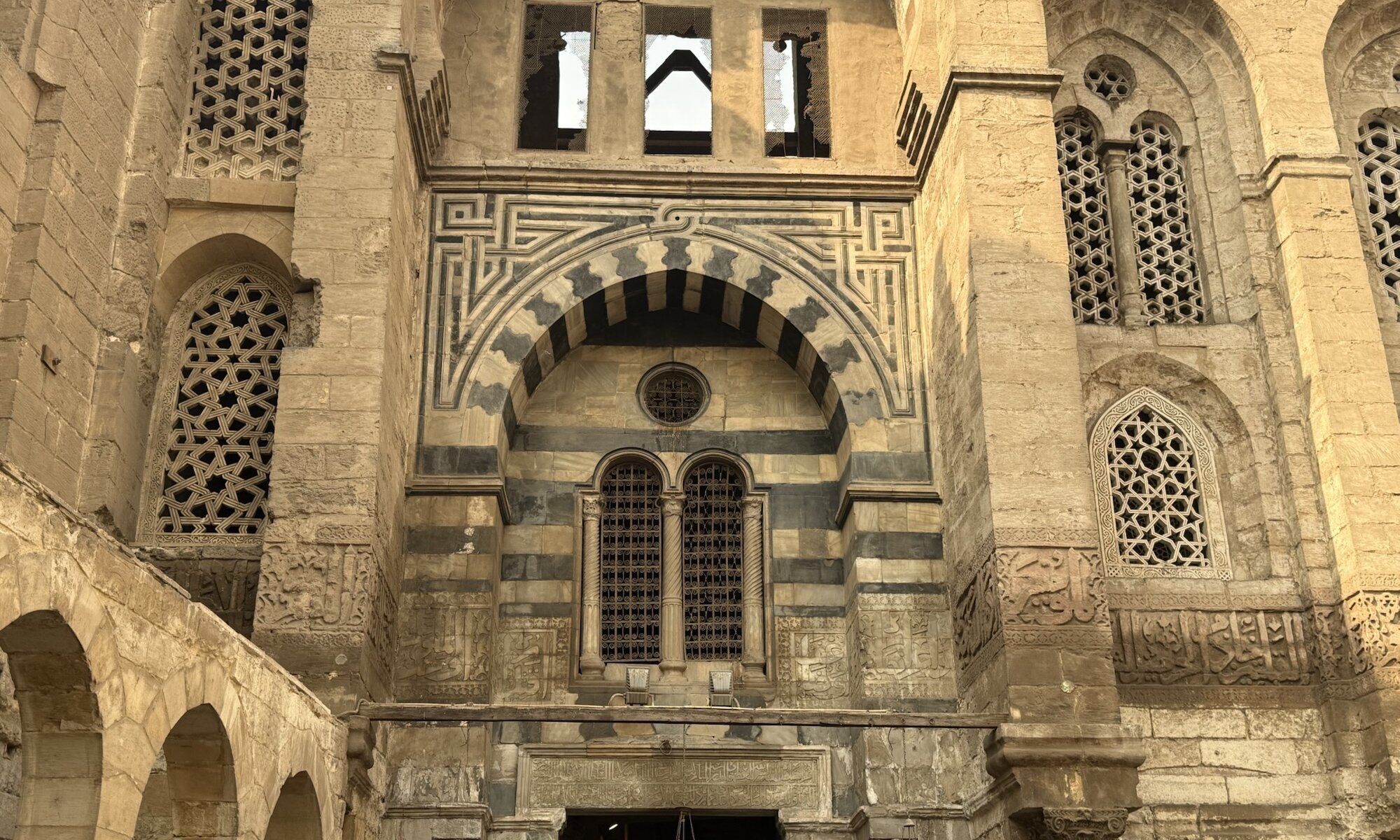Al-Mu’izz street in القاهرة stands as a vivid testament to the city’s illustrious Islamic past, extending from Bab Al-Futuh in the north down to Bab Zuweila in the south. Founded in the 10th century by the Fatimids and named after Caliph Al-Muizz li-Din Allah, the street once served as القاهرة’s principal thoroughfare – a bustling artery teeming with markets, religious establishments, and governmental edifices. Over successive eras, including those of the Ayyubids, Mamluks, and Ottomans, it retained its prominence, becoming home to some of the finest masterpieces of medieval Islamic architecture and serving as the city’s commercial, social, and spiritual heart.
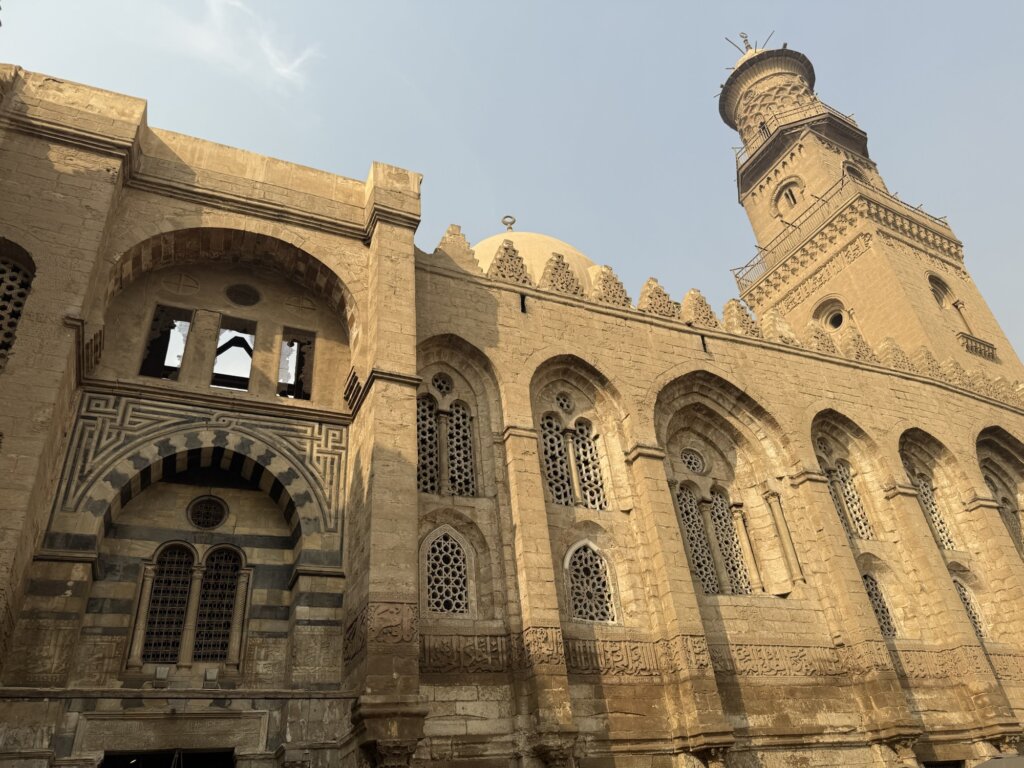
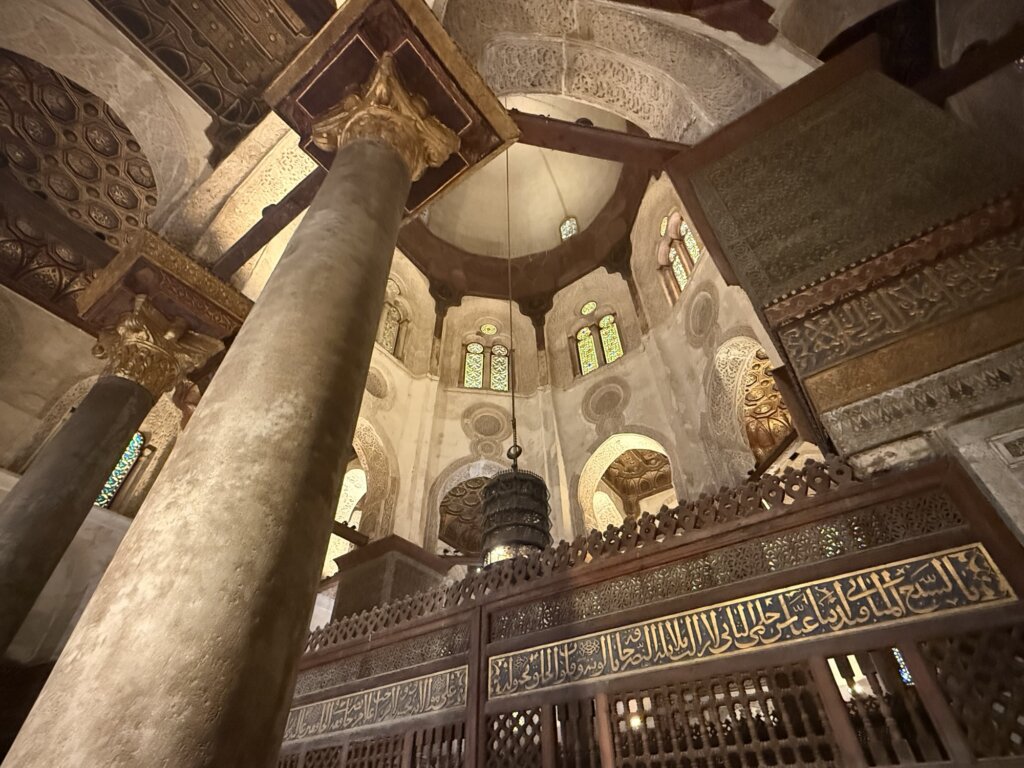
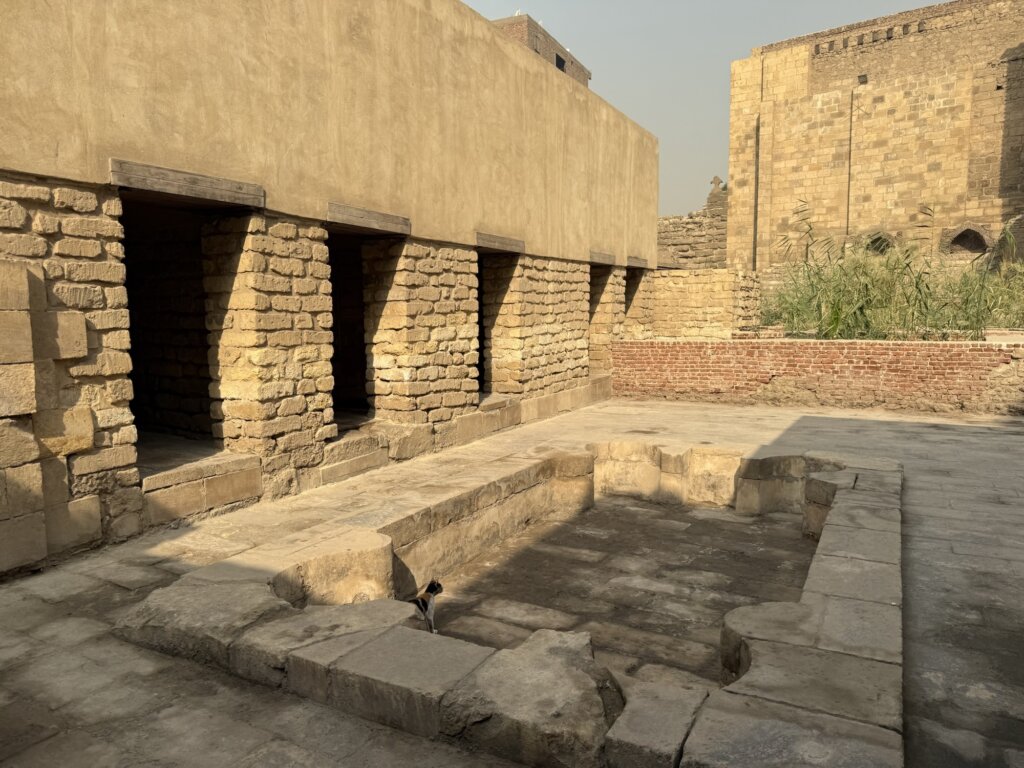
The Mansour Qalawun complex is among the most distinguished monuments on Al-Mu’izz street, capturing the sophistication of Mamluk architecture. This vast complex, commissioned by Sultan Al-Mansur Qalawun in the late 13th century, masterfully unites a madrasa (school), a mosque, and a hospital (maristan) beneath one roof. The madrasa was esteemed for its teaching of all four Sunni schools of law, becoming a beacon of scholarship. Adjacent, the maristan provided care for the sick, elevating the Sultan’s benevolence and demonstrating a rare union of spiritual learning and social welfare.

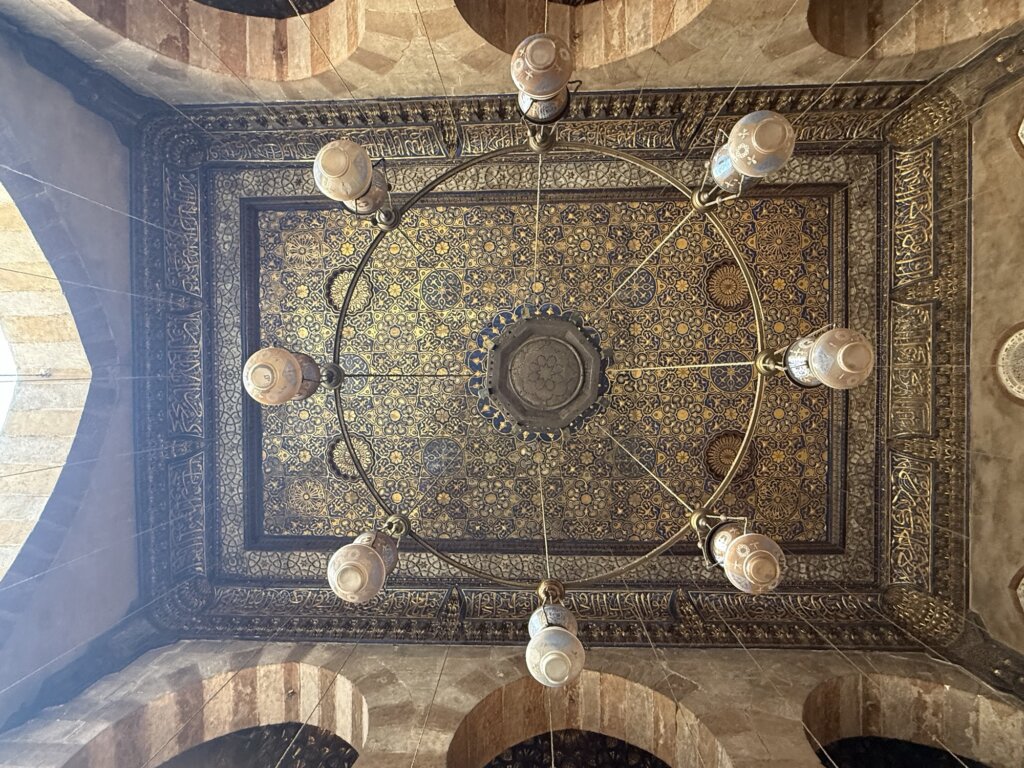

Further impressions of Mamluk grandeur can be found in the Mosque and Khanqah of Sultan Elzaher Barqouq, another monumental structure marking Al-Mu’izz with its distinctive dome and minaret. Constructed in the 14th century, this complex also functioned both as a mosque and a centre for Sufi gatherings (khanqah). Its interiors are noted for their elegant woodwork, intricately carved mihrab, and impressive ceilings, reflecting the ambitious urban and religious patronage of the Mamluks. The educational and spiritual activities held here linked the complex to القاهرة’s intellectual elite, ensuring its central role through subsequent decades.

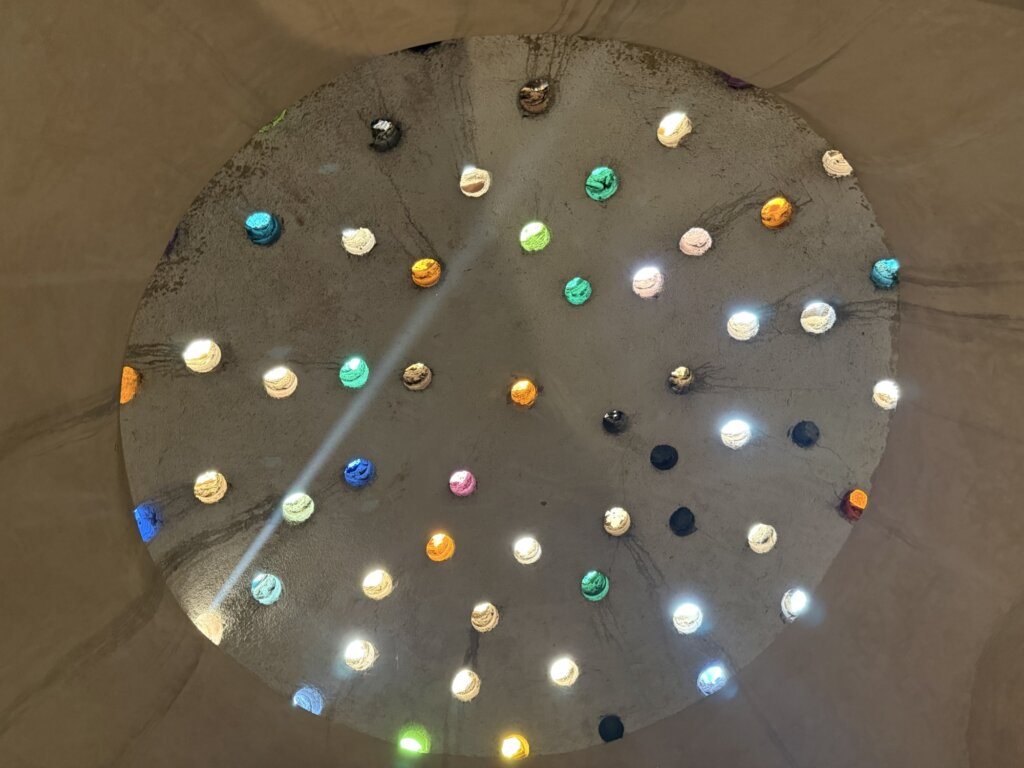
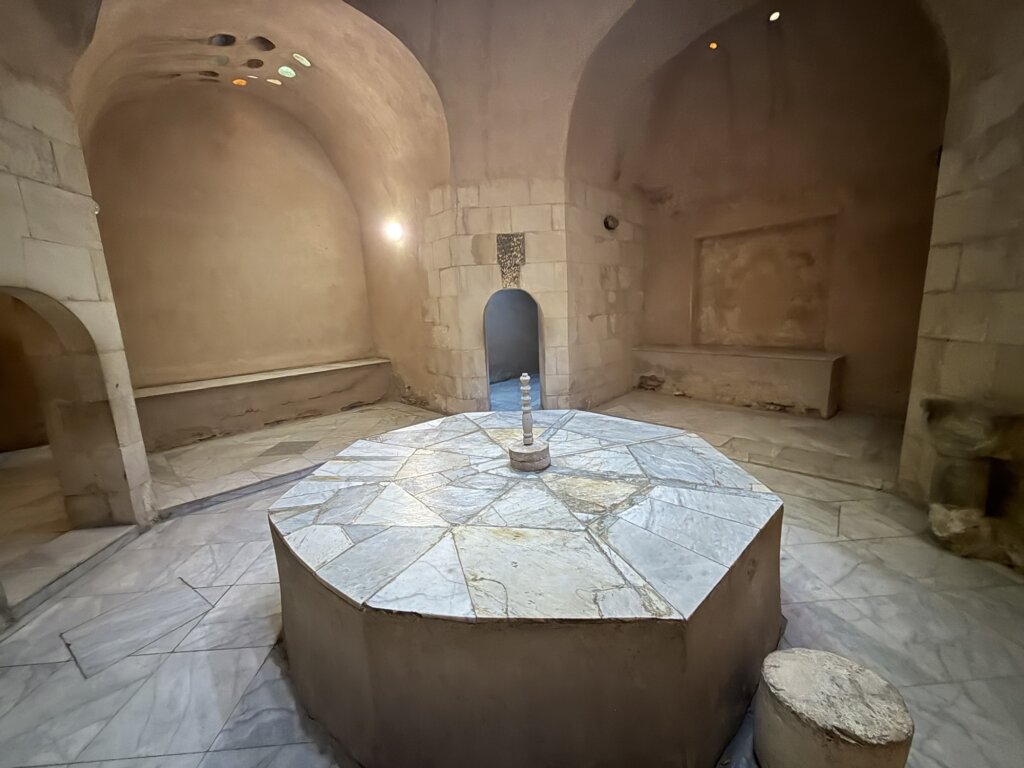
The Hamam Inal offers another layer to the street’s historic canvas, representing the once-prevalent tradition of public baths in Islamic القاهرة. Built by Prince Inal al-Yusufi in the Mamluk era, this bathhouse not only provided essential hygienic amenities – a vital feature before modern plumbing – but also fulfilled a social function, serving as a venue for communal gatherings and ceremonial cleansings. Alongside other heritage structures on Al-Mu’izz, Hamam Inal underscores the everyday rhythms and communal spirit that animated medieval القاهرة, echoing traditions that shaped the city’s enduring character.
شارع المعز لدين الله الفاطمي
Al-Mu’izz street
القاهرة
Egypt
Loading map...


